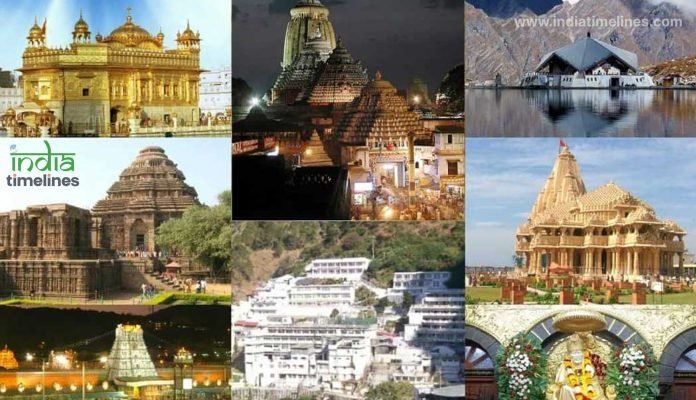
India, a land of diverse cultures and deep-rooted spirituality, boasts an array of religious places that offer a unique spiritual experience. Journey with ( India Awaits ) us through the amazing religious places in India for a spiritual ride, where history, culture, and divinity converge.
India’s religious tapestry is woven with threads of spirituality, history, and cultural richness. Pilgrimages in this diverse country are not just journeys; they are transformative experiences that touch the soul. Let’s embark on a spiritual ride, exploring some of the most amazing religious places in India.
Varanasi – A City of Spiritual Blis
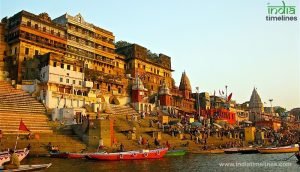
Varanasi, one of the oldest continuously inhabited cities in the world, is renowned for its rich spiritual and cultural heritage. Nestled on the banks of the sacred Ganges River in the northern Indian state of Uttar Pradesh, Varanasi is a city that exudes a unique charm and vibrancy. Here are some highlights that make Varanasi a city of spiritual bliss:
- Kashi Vishwanath Temple:
- This iconic temple dedicated to Lord Shiva is one of the holiest in Hinduism.
- The temple is known for its elaborate architecture and intricate carvings.
- Pilgrims believe that a visit to Kashi Vishwanath can lead to liberation from the cycle of birth and death.
- Ganga Aarti at Dashashwamedh Ghat:
- The Dashashwamedh Ghat comes alive every evening with the spectacular Ganga Aarti.
- Priests perform a synchronized ritual of light and sound, offering prayers to the sacred river Ganges.
- The mesmerizing ceremony attracts pilgrims and tourists alike, creating a spiritual ambiance.
- Assi Ghat:
- Assi Ghat is a serene and quieter ghat compared to others, ideal for meditation and contemplation.
- It is believed that Lord Shiva took a dip at Assi Ghat before leaving for the heavenly abode.
- Sarnath:
- Located just a short drive from Varanasi, Sarnath is a significant Buddhist pilgrimage site.
- It is where Lord Buddha delivered his first sermon after attaining enlightenment.
- The Dhamek Stupa and the Ashoka Pillar are notable attractions in Sarnath.
- Tulsi Manas Temple:
- Dedicated to Lord Rama, the Tulsi Manas Temple is known for its exquisite marble architecture.
- The walls of the temple are adorned with verses from the Ramcharitmanas, an epic poem written by the saint Tulsidas.
- Varanasi Silk Sari Shopping:
- The city is famous for its Banarasi silk sarees, known for their opulence and intricate weaving.
- The bustling markets offer a wide variety of handwoven textiles, making it a perfect place for shopping.
- Kachori Gali:
- Varanasi is also a paradise for food enthusiasts, and Kachori Gali is a must-visit for local delicacies.
- Indulge in the famous kachoris and other street food items that showcase the city’s culinary delights.
Varanasi, with its spiritual resonance and cultural richness, continues to attract seekers, scholars, and tourists from around the world, offering a profound experience of India’s ancient traditions and beliefs.
Golden Temple – Amritsar’s Spiritual Jewel
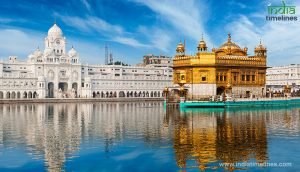
The Golden Temple, also known as Sri Harmandir Sahib, is a spiritual and cultural gem located in Amritsar, Punjab, India. Here are some aspects that make it a renowned destination:
The Golden Temple is one of the most revered Sikh shrines and serves as the central religious place for Sikhs around the world. Its distinctive golden dome and stunning architecture make it an iconic symbol of Sikhism. The temple is built around a sacred pool, known as the Amrit Sarovar, which gives Amritsar its name.
Visitors can witness the awe-inspiring ritual of the ‘Aarti,’ a daily ceremony involving the singing of hymns and the waving of lights before the Guru Granth Sahib (the holy scripture of Sikhism). The spiritual ambiance during these ceremonies is truly captivating and leaves a lasting impression on those who attend.
Market:
The area surrounding the Golden Temple is bustling with activity and features a vibrant market known as the Guru Bazaar. Here, visitors can explore a variety of shops offering religious artifacts, traditional Sikh attire, and local handicrafts. The market provides a unique shopping experience and a glimpse into the local culture.
Place to Visit:
Apart from the Golden Temple itself, there are other significant attractions nearby. The Akal Takht, a prominent seat of Sikh religious authority, is situated within the temple complex. Jallianwala Bagh, a memorial garden commemorating the tragic massacre in 1919, is also located in close proximity.
The langar, a community kitchen at the Golden Temple, serves free meals to all visitors regardless of their background, emphasizing the principles of equality and service in Sikhism.
Tips for Visitors:
- Respectful Attire: When visiting the Golden Temple, it’s essential to dress modestly. Covering your head is a sign of respect, and scarves are available for those who need them.
- Footwear: Visitors must remove their shoes before entering the temple complex. Shoe storage facilities are provided.
- Photography: While photography is allowed in most areas, it’s crucial to be mindful and avoid disturbing worshippers during prayers and ceremonies.
- Peaceful Reflection: The Golden Temple is not just a religious site but also a place for quiet reflection and spiritual solace. Visitors are encouraged to absorb the serene atmosphere.
In essence, the Golden Temple is not only a religious site but a cultural and humanitarian center that welcomes people from all walks of life, exemplifying the principles of equality, selfless service, and devotion.
Rishikesh – Yoga Capital of the World
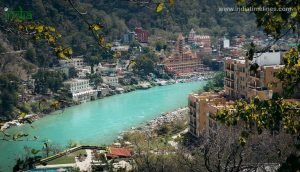
Rishikesh, often referred to as the “Yoga Capital of the World,” is a serene and spiritual town nestled in the Himalayan foothills along the banks of the Ganges River. It is renowned for its rich cultural and religious heritage, attracting seekers of spiritual wisdom and yoga enthusiasts from around the globe. Here are some notable features of Rishikesh:
Parmarth Niketan
Parmarth Niketan is one of the most prominent ashrams in Rishikesh, situated on the banks of the Ganges. It serves as a spiritual haven, offering yoga and meditation programs. The ashram also hosts the renowned Ganga Aarti, a mesmerizing evening prayer ceremony by the river.
Puja (Prayer) Rituals: Ganga Aarti
Ganga Aarti is a captivating ritual that takes place at Parmarth Niketan and Triveni Ghat in Rishikesh. It involves the chanting of hymns, the lighting of lamps, and the rhythmic waving of incense sticks, creating a mesmerizing atmosphere as participants pay homage to the sacred Ganges River.
Market: Rishikesh Market
Rishikesh offers a bustling market where visitors can explore a variety of items. From traditional handicrafts to yoga gear, the market caters to diverse interests. The Laxman Jhula and Ram Jhula areas are particularly known for their vibrant marketplaces.
The Beatles Ashram (Maharishi Mahesh Yogi Ashram)
This ashram gained international fame when The Beatles visited in the 1960s. Now abandoned, it’s a fascinating place to explore, covered in vibrant graffiti and surrounded by lush greenery. It provides a tranquil space for introspection and meditation.
Triveni Ghat
Triveni Ghat is a sacred bathing spot at the confluence of the Ganges, Yamuna, and Saraswati rivers. It is also known for the daily Ganga Aarti and is believed to be a place where one can attain spiritual purification.
Neelkanth Mahadev Temple
Located amidst the forested hills, Neelkanth Mahadev Temple is dedicated to Lord Shiva. The temple is a significant pilgrimage site and offers panoramic views of the surrounding mountains.
Rishikesh’s unique blend of spirituality, natural beauty, and cultural vibrancy makes it a must-visit destination for those seeking a transformative and enriching experience.
Bodh Gaya – Where Enlightenment Happened
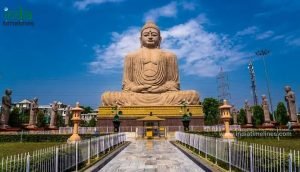
Bodh Gaya, located in the state of Bihar, India, is one of the most important pilgrimage sites for Buddhists worldwide. The town is renowned for being the place where Siddhartha Gautama, the historical Buddha, attained enlightenment under the Bodhi tree around 2,500 years ago. This event marked the birth of Buddhism as a distinct spiritual tradition. The Mahabodhi Temple, a UNESCO World Heritage Site, stands at the very spot where the Buddha achieved enlightenment.
Time to Visit: Bodh Gaya can be visited throughout the year, but the ideal time is from October to March when the weather is relatively pleasant. The winter months (November to February) are particularly favorable, with daytime temperatures ranging from 12 to 25 degrees Celsius (54 to 77 degrees Fahrenheit). During this period, the climate is cool, and outdoor exploration is more comfortable.
Famous Places to Visit:
- Mahabodhi Temple: This ancient temple, built in the 3rd century BCE, is the main attraction in Bodh Gaya. It houses the sacred Bodhi tree and the Vajrasana, the Diamond Throne, where the Buddha attained enlightenment.
- Bodhi Tree: The current Bodhi tree is believed to be a direct descendant of the original tree under which the Buddha meditated. Pilgrims often circumambulate it, and its leaves are considered sacred.
- Great Buddha Statue (80-Foot Statue): This towering statue of Lord Buddha is a recent addition to Bodh Gaya and has become a significant landmark. It symbolizes peace and tranquility.
- Archaeological Museum: Located near the Mahabodhi Temple, this museum houses a collection of artifacts and relics related to Buddhism, providing insight into the region’s rich history.
- Sujata Kuti: A short distance from Bodh Gaya, Sujata Kuti is believed to be the place where a lady named Sujata offered rice pudding to the Buddha before his enlightenment.
- Royal Bhutan Monastery: Known for its beautiful architecture and serene surroundings, this monastery is a peaceful place for meditation and reflection.
- Dungeshwari Cave Temples: Around 12 kilometers from Bodh Gaya, these caves are associated with the Buddha’s meditation practices before attaining enlightenment.
Bodh Gaya attracts visitors not only for its religious significance but also for the tranquility and spiritual ambiance that permeate the town. It remains a center for pilgrimage and meditation, welcoming people from various walks of life seeking inner peace and enlightenment.
Meenakshi Amman Temple – Madurai’s Artistic Marvel
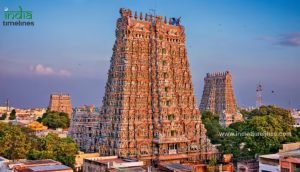
Meenakshi Amman Temple, located in the city of Madurai in the Indian state of Tamil Nadu, is one of the most prominent and ancient temples in the country. Here’s a brief overview of its history, the best time to visit, and some famous places within the temple complex:
The Meenakshi Amman Temple is dedicated to Goddess Meenakshi, an avatar of Parvati, and her consort Lord Sundareswarar, an avatar of Shiva. The temple’s history dates back to around 2,500 years, making it a significant cultural and religious landmark. The current structure was built during the Nayaka dynasty in the 17th century, with contributions from various rulers over the centuries.
Architecture:
The temple is renowned for its impressive Dravidian architecture, characterized by towering gopurams (ornate entrance towers), intricate carvings, and vibrant sculptures. The complex spans 14 colorful gopurams, with the tallest standing at 52 meters. The temple’s outer walls are adorned with thousands of beautifully detailed sculptures depicting mythological stories, deities, and scenes from daily life.
Time to Visit:
The best time to visit the Meenakshi Amman Temple is during the months of October to March when the weather is relatively pleasant. The temple attracts pilgrims and tourists throughout the year, but visiting during major festivals like Meenakshi Thirukalyanam (Chitrai Festival) in April or May adds to the vibrant cultural experience.
Famous Places to Visit Within the Temple:
- Meenakshi Shrine: The main sanctum dedicated to Goddess Meenakshi with a golden lotus pond.
- Sundareswarar Shrine: The sanctum dedicated to Lord Sundareswarar (Shiva).
- Porthamarai Kulam (Pond with a Golden Lotus): A sacred pond within the temple complex.
- Hall of Thousand Pillars: A hall with intricately carved pillars showcasing various forms of Lord Shiva.
- Ashta Shakthi Mandapam: A hall depicting the eight forms of Goddess Parvati.
Tips for Visitors:
- Dress Code: Visitors are expected to dress modestly. It’s customary to remove footwear before entering the temple.
- Timing: The temple has specific opening and closing times. Plan your visit accordingly.
- Guided Tours: Consider taking a guided tour to gain a deeper understanding of the temple’s history and significance.
The Meenakshi Amman Temple stands not only as a religious site but also as a testament to the rich cultural heritage of India, attracting visitors from around the world.
Kedarnath – A Himalayan Pilgrimage

Kedarnath is a sacred town located in the Rudraprayag district of the northern state of Uttarakhand, India. It holds great religious significance in Hinduism and is one of the Char Dham pilgrimage sites. Here’s some information about the history, the best time to visit, and famous places to visit in Kedarnath
History:
Kedarnath is dedicated to Lord Shiva and is believed to be one of the holiest Hindu shrines. According to Hindu mythology, the Pandavas, after the Kurukshetra War, sought forgiveness from Lord Shiva for killing their own kith and kin. However, Lord Shiva eluded them repeatedly and took refuge at Kedarnath in the form of a bull. The temple is said to have been built by Adi Shankaracharya in the 8th century.
Best Time to Visit:
The best time to visit Kedarnath is during the summer months, from May to June, and then in September. During these months, the weather is relatively mild, and the pilgrimage season is at its peak. The temple remains closed during the winter months (November to April) due to heavy snowfall, and the region becomes inhospitable.
Famous Places to Visit:
-
- Kedarnath Temple: The main attraction is the Kedarnath Temple, dedicated to Lord Shiva. The temple is constructed in the ancient Himalayan style and is known for its exquisite architecture.
- Bhairavnath Temple: Located around 1 km from Kedarnath Temple, this temple is dedicated to Bhairav, an incarnation of Lord Shiva.
- Gandhi Sarovar and Vasuki Tal: These are picturesque lakes near Kedarnath. Pilgrims often visit these natural wonders during their journey.
- Chorabari Tal (Gandhi Sarovar): Also known as Gandhi Sarovar, it is a beautiful lake situated at an altitude of about 3,900 meters.
Pilgrimage and Trekking:
-
- Kedarnath is a significant pilgrimage site, and the journey involves a trek of about 16 kilometers from Gaurikund.
- The trekking route offers stunning views of the Himalayan peaks, and pilgrims often stop at various points like Rambara and Linchauli during their journey.
Remember to check the weather conditions and the opening dates of the temple before planning your visit to Kedarnath. The pilgrimage to Kedarnath is not just a physical journey but also a spiritual one, attracting thousands of devotees and nature enthusiasts every year.
Ajmer Sharif Dargah – Sufi Mysticism in Rajasthan
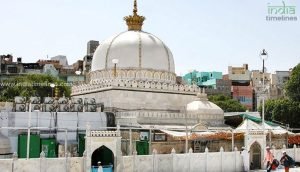
Ajmer Sharif Dargah is one of the most important Sufi shrines in India, located in the city of Ajmer in the state of Rajasthan. It is a significant pilgrimage site for followers of Islam, particularly for those of the Sufi faith. Here is some information about the history, the best time to visit, and notable places to explore around the Ajmer Sharif Dargah:
History:
The Ajmer Sharif Dargah, also known as the Dargah Sharif or Khwaja Gharib Nawaz Dargah, is the final resting place of Khwaja Moinuddin Chishti, a 13th-century Sufi saint and a revered spiritual teacher. He is known for promoting the values of love, peace, and unity among people, regardless of their religious or social backgrounds. The dargah has a rich history and has been a center of pilgrimage for centuries.
Time to Visit:
The dargah is open to people of all faiths, and pilgrims visit throughout the year. However, the annual Urs festival, commemorating the death anniversary of Khwaja Moinuddin Chishti, is a particularly auspicious time to visit. The Urs attracts a large number of devotees and takes place in the Islamic month of Rajab. It is a vibrant and spiritual celebration marked by various rituals, prayers, and cultural events.
Famous Places to Visit:
- Dargah Sharif: The main shrine where the tomb of Khwaja Moinuddin Chishti is located. Pilgrims offer prayers and seek blessings here.
- Buland Darwaza: This grand entrance gate to the dargah is an imposing structure and a symbol of the spiritual significance of Ajmer Sharif.
- Rauza Sharif: The inner sanctum of the dargah where the tomb of the Sufi saint is placed. Devotees come here to offer prayers and seek the saint’s blessings.
- Nizam Gate: An intricately designed gate that leads to the main courtyard of the dargah.
- Aulia Masjid: A mosque located within the complex that holds historical and architectural significance.
Ajmer Sharif Dargah is not only a place of religious significance but also a symbol of unity and love, attracting people from various walks of life. Visitors can experience the rich cultural tapestry of India and witness the enduring legacy of Sufi mysticism.
Tirupati Balaji – Wealth of Devotion
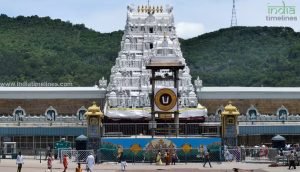
Tirupati Balaji, also known as Venkateswara, is a highly revered deity in Hinduism, and the temple dedicated to him is one of the most visited pilgrimage sites in India. Here’s a brief overview of the history, the best time to visit, and some famous places to visit in and around Tirupati:
History:
The Sri Venkateswara Temple, located in the hill town of Tirumala in Andhra Pradesh, India, is dedicated to Lord Venkateswara, an incarnation of Lord Vishnu. The temple has a rich history and is believed to have been constructed over several centuries. The presiding deity, Venkateswara, is also known as Balaji, Srinivasa, and Govinda. The temple attracts millions of pilgrims annually, making it one of the wealthiest and most visited religious sites in the world.
Time to Visit:
The temple is open throughout the year, but certain times are considered more auspicious for a visit. The Brahmotsavam festival, which usually takes place in September, is a significant event when the temple sees a surge in pilgrim activity. Other festivals like Vaikunta Ekadasi and the annual Rath Yatra are also popular times for devotees to visit. However, it’s essential to check the temple’s official website or local sources for any specific events or festivals during your planned visit.
Famous Places to Visit:
- Sri Venkateswara Temple: The main temple is a masterpiece of Dravidian architecture and is located on the seventh peak of the Tirumala Hills. The sanctum sanctorum houses the idol of Lord Venkateswara.
- Akasa Ganga: A waterfall situated in the hills, believed to be a manifestation of the holy Ganges. Pilgrims often take a dip in its waters before visiting the main temple.
- Papavinasam Teertham: This is a waterfall located in the hills, and it is believed that taking a dip in its waters can cleanse one of their sins.
- Sri Vari Museum: It showcases the history and significance of the temple through a collection of artifacts, photographs, and exhibits.
- Tirumala Deer Park: Located on the Seshachalam Hills, it is a serene place where visitors can see a variety of deer.
Tips for Visitors:
- Darshan: The temple can get crowded, so it’s advisable to plan your visit during weekdays or during off-peak seasons for a more comfortable darshan (viewing of the deity).
- Accommodation: Tirumala offers various accommodation options for pilgrims. It’s recommended to book your stay in advance.
- Dress Code: There is a strict dress code for entering the temple. Men are required to wear dhotis, and women are expected to wear sarees or traditional attire.
- Laddu Prasadam: The famous Tirupati Laddu is offered as prasadam. Pilgrims often buy it as a sacred souvenir.
Visiting Tirupati Balaji is not just a religious experience but also an architectural and cultural journey. The devotion and spirituality surrounding the temple make it a must-visit destination for pilgrims and tourists alike.
Shirdi Sai Baba Temple – Epitome of Compassion
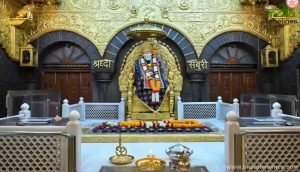
Shirdi Sai Baba Temple is a renowned pilgrimage site in India and is considered the epitome of compassion. Here is an overview of its history, the best time to visit, and some famous places to explore:
History:
The Shirdi Sai Baba Temple is located in the small town of Shirdi in the state of Maharashtra, India. It is dedicated to the revered saint Sai Baba, who is believed to have lived in Shirdi during the late 19th and early 20th centuries. Sai Baba is regarded as a spiritual master and a symbol of love and compassion.
Sai Baba’s origin and early life remain shrouded in mystery, adding to the aura of spirituality surrounding him. He is said to have arrived in Shirdi as a young man and spent his life there, performing miracles and spreading his teachings of love, tolerance, and acceptance of all religions.
The temple was built after Sai Baba’s samadhi (a state of deep meditation) in 1918, and it has since become a significant pilgrimage site, attracting millions of devotees each year.
Time to Visit:
The temple is open throughout the year, but there are specific times that hold special significance for devotees. Two major festivals celebrated in the temple are Ram Navami (Sai Baba’s birth anniversary) and Vijayadashami. Pilgrims often prefer visiting during these festivals to partake in the special ceremonies and experience the vibrant atmosphere.
Additionally, Thursdays are considered particularly auspicious, as they are dedicated to Sai Baba. Many devotees choose this day to visit the temple and seek the saint’s blessings.
Famous Places to Visit:
- Sai Baba Samadhi Mandir: This is the main shrine where Sai Baba’s tomb is located. Devotees from all walks of life come to pay their respects and seek the saint’s blessings.
- Dwarkamai: It is a mosque where Sai Baba spent a significant portion of his life. It is believed to be a place of immense spiritual energy, and visitors can see the sacred dhuni (fire) that Sai Baba kept perpetually burning.
- Chavadi: A small building where Sai Baba used to sleep every alternate night. It is a symbol of the saint’s simplicity and humility.
- Lendi Baug: A garden that Sai Baba often visited and watered, it holds great significance for devotees.
- Khandoba Temple: This temple is dedicated to Khandoba, a deity whom Sai Baba worshipped. Devotees often visit this temple as part of their pilgrimage.
Overall, a visit to the Shirdi Sai Baba Temple provides not only a religious experience but also a sense of peace and spiritual fulfillment for those seeking solace and guidance.
Jagannath Temple – Puri’s Spiritual Heart
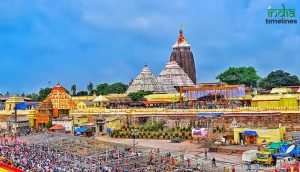
The Jagannath Temple, located in Puri, Odisha, India, is a renowned Hindu temple and a significant pilgrimage destination. Here’s an overview of its history, the best time to visit, and some famous places to explore:
History:
The Jagannath Temple is dedicated to Lord Jagannath, a form of Lord Vishnu, along with his siblings Balabhadra and Subhadra. The temple’s history dates back to ancient times, with its construction attributed to King Anantavarman Chodaganga Deva in the 12th century. Over the centuries, the temple has undergone several renovations and additions.
One of the distinctive features of the Jagannath Temple is the annual Rath Yatra, a grand chariot festival where the deities are taken on elaborately decorated chariots through the streets of Puri.
Best Time to Visit:
The ideal time to visit the Jagannath Temple is during the winter months, from October to March, when the weather is pleasant. The monsoon season (June to September) should be avoided due to heavy rainfall.
Famous Places to Visit:
- Jagannath Temple: The main temple is an architectural marvel with its towering spire (shikhara). The temple complex also includes the “Meghanada Pacheri,” a high wall surrounding the main shrine.
- Rath Yatra: If you happen to visit during the Rath Yatra, you’ll witness an extraordinary spectacle as the deities are paraded through the streets on massive chariots. This festival attracts millions of devotees from around the world.
- Puri Beach: Take a stroll along the beautiful Puri Beach, located near the temple. It’s an excellent place to relax and enjoy the serene surroundings.
- Gundicha Temple: Also known as the Garden House of Jagannath, this temple is associated with the Rath Yatra. It is believed that Lord Jagannath stays here for a week during the festival.
- Narendra Tank: This sacred tank is located near the temple and is believed to have medicinal properties. Pilgrims often take a dip in the tank before entering the temple.
- Puri Jagannath Temple Museum: Explore the museum to learn more about the history and traditions associated with the temple. It houses artifacts, sculptures, and historical documents.
Visiting the Jagannath Temple in Puri offers not only a spiritual experience but also a glimpse into the rich cultural and architectural heritage of India. Ensure you respect the temple’s customs and guidelines during your visit.
Vaishno Devi – Divine Feminine Energy
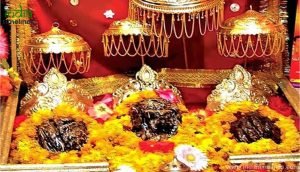
Vaishno Devi is a sacred Hindu pilgrimage site dedicated to the goddess Vaishno Devi, who is considered a manifestation of the divine feminine energy. Situated in the Trikuta Mountains of the Indian state of Jammu and Kashmir, the shrine attracts millions of devotees each year. Here is a brief overview of its history, the recommended time to visit, and some famous places to explore:
History:
The history of Vaishno Devi dates back to ancient times and is deeply rooted in Hindu mythology. The legend goes that Vaishno Devi, also known as Mata Rani, took refuge in the caves of the Trikuta Mountains to escape the pursuit of a demon named Bhairon. After a prolonged battle, the goddess vanquished the demon, and the cave became a place of worship.
Time to Visit:
While devotees visit Vaishno Devi throughout the year, the peak pilgrimage season is during the Navaratri festival, which usually falls in September or October. The weather is relatively pleasant during these months, making the journey more comfortable. However, the shrine remains open year-round, and many pilgrims also undertake the journey during other times.
Famous Places to Visit:
- Vaishno Devi Temple: The main attraction is the cave shrine dedicated to Vaishno Devi. Pilgrims have to trek uphill to reach the temple, which is located at an altitude of approximately 5,200 feet.
- Ardhkuwari Temple: This temple is situated approximately halfway to the Vaishno Devi Temple. It is believed to be the place where the goddess spent some time during her escape from Bhairon.
- Bhairon Temple: Located near the main Vaishno Devi Temple, this is where the demon Bhairon was ultimately defeated by the goddess.
- Sanjichhat: It is a popular stopover point during the trek. Pilgrims often rest here and take in the scenic views of the surrounding mountains.
- Banganga: A sacred river, Banganga is believed to have originated when Mata Vaishno Devi shot an arrow into the ground to quench her thirst.
Visiting Vaishno Devi is not just a physical journey but also a spiritual one for millions of devotees who seek the blessings of the divine mother. The trek, though challenging, is undertaken with great faith and devotion by people from various walks of life.
Conclusion
Embarking on a spiritual journey to these amazing religious places in India is not just about visiting physical locations; it’s about connecting with the spiritual energy that permeates the air. Each place has its unique charm, offering a diverse tapestry of religious practices, cultural heritage, and a profound sense of divinity.
FAQs
How can I reach Varanasi?
Varanasi is well-connected by air, rail, and road. The Lal Bahadur Shastri International Airport serves as the nearest airport.
Are there accommodations available near the Golden Temple?
Amritsar offers a range of accommodations, including hotels and guesthouses, in close proximity to the Golden Temple.
Is Rishikesh suitable for beginners in yoga?
Yes, Rishikesh caters to all levels of yoga practitioners, from beginners to advanced. Numerous ashrams offer beginner-friendly classes.
What is the best time to visit Bodh Gaya?
The winter months from October to March are considered the best time to visit Bodh Gaya, with pleasant weather for exploration.
How can I participate in the Rath Yatra at Jagannath Temple?
The Rath Yatra at Jagannath Temple is open to all devotees. Plan your visit during the annual festival in Puri to witness this grand procession.

































